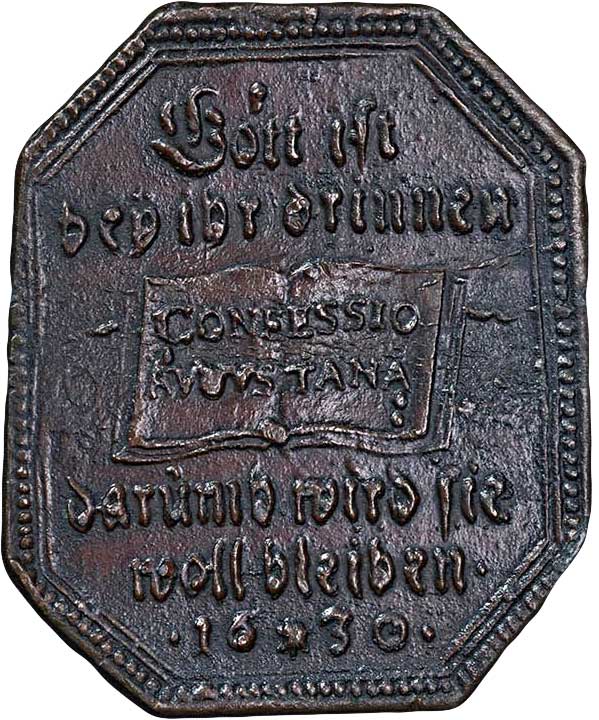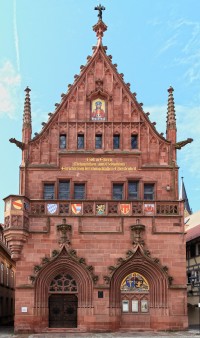Vorderseite: Im Mittelfeld ein geöffnetes Buch mit der Aufschrift CONFESSIO / AVGVSTANA (= Augsburger Konfession), darüber steht Gott ist / bey ihr drinnen, darunter darumb wird sie / woll bleiben. / .16 * 30.
Rückseite: Im Feld in neun Zeilen MEMORIA / SECULARIS CON= / = FESSIONIS AU=GUSTANÆ ANNO / MDXXX. DIE XXV / IUNI. DIVO CARO= / =LO V. IMPERATORI / & TRADITÆ ET RATIFICATÆ. (= Hundertjähriges Andenken an die Übergabe der Augsburger Konfession an Kaiser Karl V., den göttlichen, und an deren Bestätigung am 25. Juni 1530).
en

